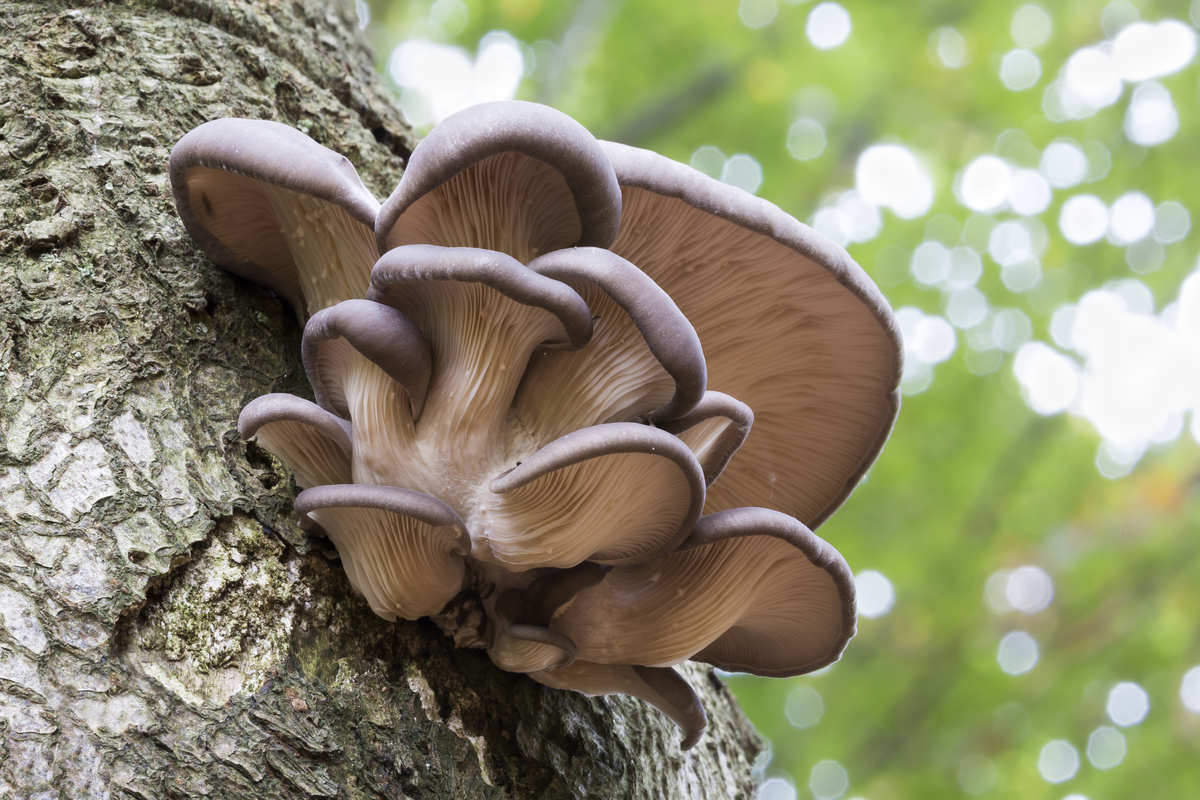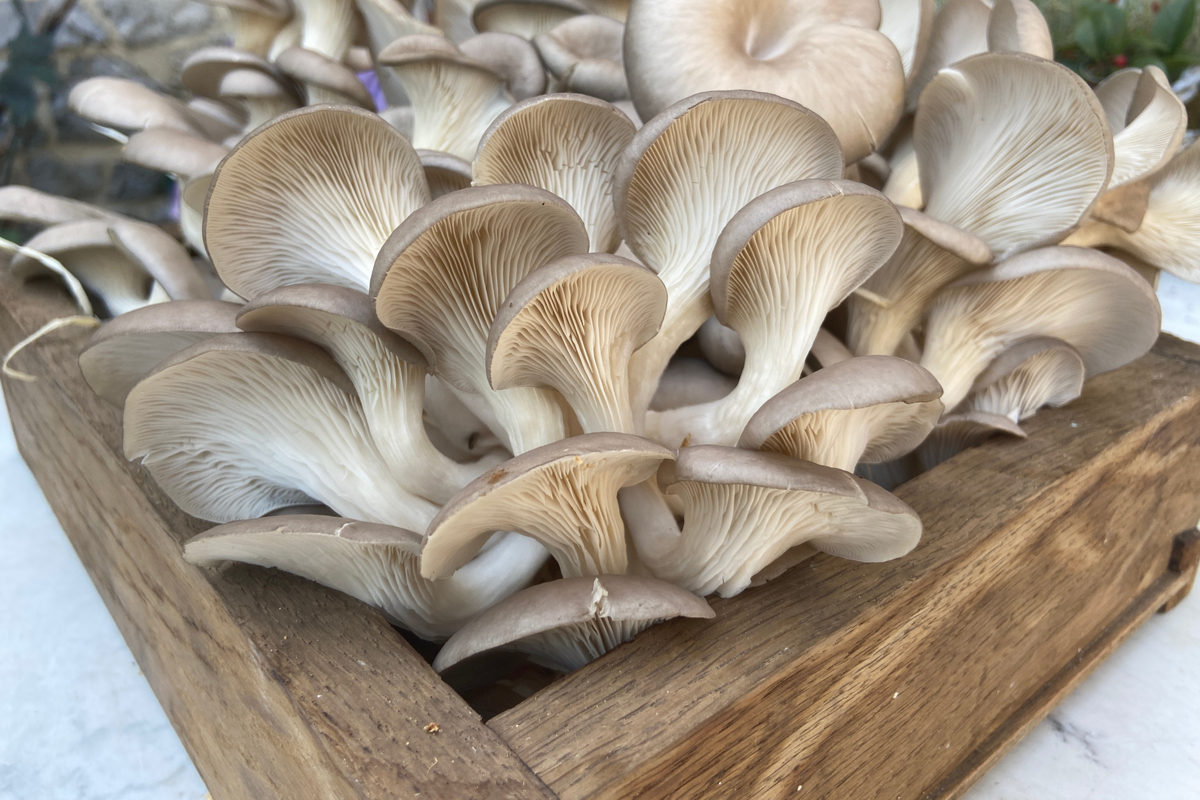Mushrooms are an interesting food. They aren’t quite vegetables, since they’re fungi not plants, but we still use them as if they were. They don’t grow in exactly the same way plants do, either, although they can still be grown at home. If you eat a lot of mushrooms, chances are you’re familiar with button or portobello mushrooms, which are commonly eaten in stir fries and on pizza. You might have heard of another kind of mushroom that’s growing in popularity, though. If you’re curious about oyster mushrooms, how to use them, and how to grow them, then you should keep reading. In this simple guide to oyster mushrooms, we’ll tell you everything you need to know about these delectable fungi.
What are oyster mushrooms?
Oyster mushrooms are a group of edible mushrooms belonging to the species Pleurotus ostreatus. They naturally grow on trees, and are eaten and cultivated in many countries, but are especially popular in China, Korea, and Japan. They have broad, mostly flat caps that tend to be light brown, gray, or white. The caps are roughly oyster-shaped, which is part of where their name comes from. There are many different varieties of oyster mushroom, and size, shape, and texture can vary depending on the type of oyster mushroom you have.
Although they still fall slightly behind button, cremini, and portobello mushrooms (which are actually the same type of mushroom at different stages of maturity), oyster mushrooms are rising in popularity. This is in part due to their flavor and nutritional value, but also because of how easy they are to grow at home.

How do you cook with them?
Oyster mushrooms have a savory but subtle flavor. Some people even detect a hint of seafood in the taste. They have a meaty texture when cooked, which has led to it becoming a meat replacement in vegetarian and vegan dishes. Oyster mushrooms can be eaten raw, but are most commonly eaten cooked. When raw, they have a spongier, chewier texture and a slightly more metallic flavor. They can also be found dried. Chopped raw oyster mushrooms and dried oyster mushroom crumbles are particularly popular in salads.
Oyster mushrooms are a nutritious addition to meals. They contain protein, as well as a number of minerals and elements such as iron, potassium, and even calcium. These minerals and elements aren’t present in large amounts, but every little bit helps when it comes to keeping your meals balanced.
Similar to other mushrooms, oyster mushrooms will soak up any liquid they’re placed in. This can be a benefit or a detriment, depending on how you approach it. It makes cleaning freshly harvested mushrooms more difficult, since you can’t soak them in water the way you might some vegetables. However, it can also make them more flavorful and succulent, if they’re cooked in a sauce. Oyster mushrooms are mild enough that they can be added to almost any dish, and are particularly good when sautéed or stir fried.

How to grow oyster mushrooms
Oyster mushrooms are among the easiest mushrooms to grow at home, as long as you know the basics of caring for them. There are kits you can find online or in some gardening stores that provide you with everything you need, but you can also skip the kit and set everything up yourself if you prefer.
You’ll need oyster mushroom spores or spawn, as well as a substrate, or growing material, and a container to grow them in. Grow bags are typically used for oyster mushrooms, but they can be grown in a bucket as well. Since they grow on trees, they grow horizontally instead of vertically, so they need a container that can keep the substrate upright, with holes or cuts for the mushrooms to grow out of.
Oyster mushrooms will grow on a variety of substrates, including straw, sawdust, wood chips, or even a log. Sterilize your substrate with heat first so you can be sure you’re only growing oyster mushrooms and not anything else. Add the spores or spawn to your substrate, and place it in a dark, warm place for about a week while the mycelium grow.
After the mycelium have covered the substrate, move it to a cooler location. Oyster mushrooms still need shade, but this second location can have some low-level indirect light. After another few days, you’ll start to see the mushrooms forming. These mushrooms are ready to harvest roughly a week after they start forming, and the mycelium will produce two additional harvests of mushrooms afterwards. Harvest them by cutting them at the base of the stem, or by gently twisting or snapping them off by hand.
Oyster mushrooms are a delicious, nutritious mushroom. They’re easy to grow, and they grow quickly. Whether you’re interested in getting oyster mushrooms from the grocery store or farmers market, or if you’d like to try your hand at growing them yourself, hopefully this guide has inspired you to add these tasty treats to your meals or your garden.


